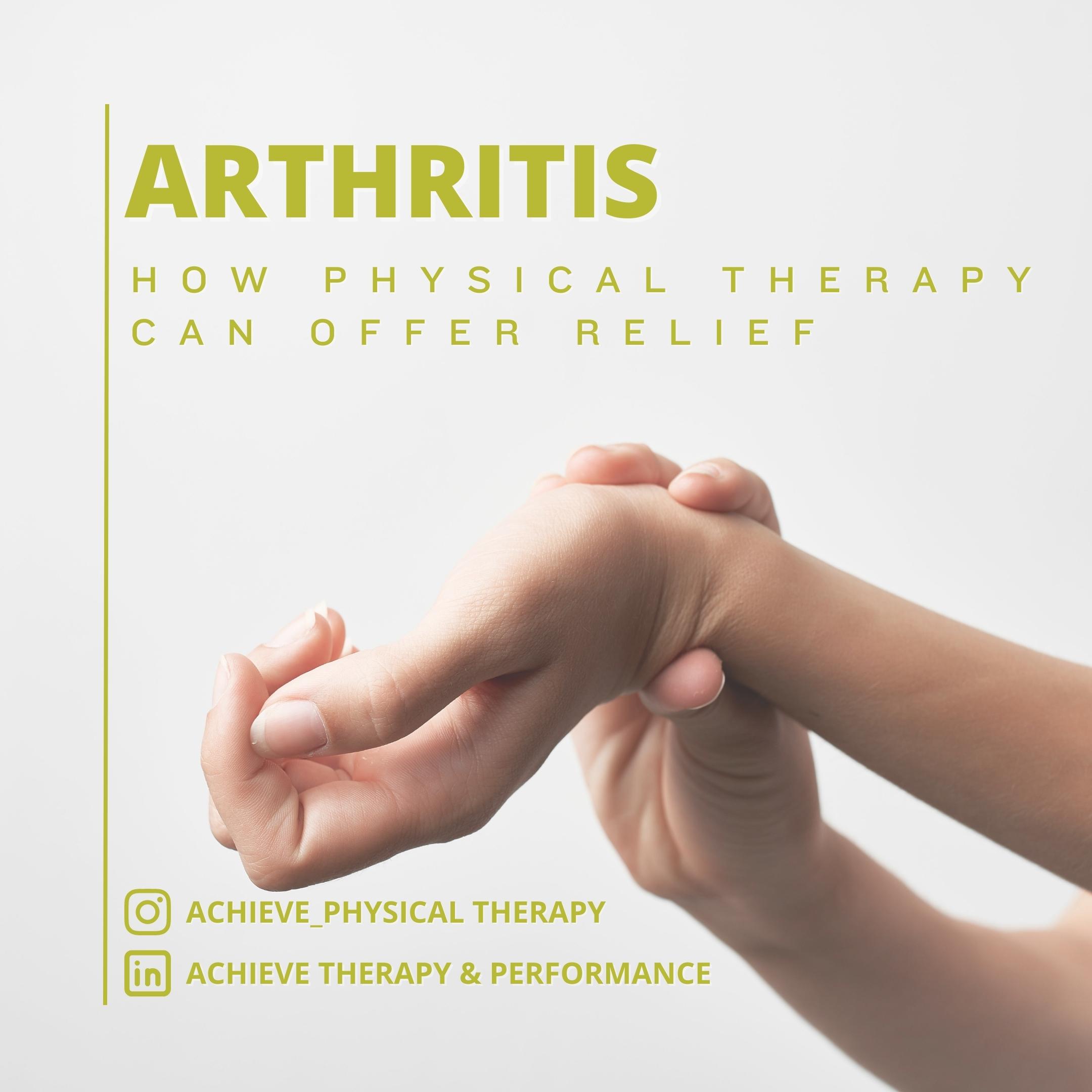
Arthritis is a common health condition that affects millions of people worldwide, causing pain, stiffness, and reduces mobility. It is essential to comprehend this condition to effectively manage its symptoms and improve the quality of your life. In this blog post, we will explore what arthritis is, the three most common types, Osteoarthritis, Rheumatoid Arthritis and Gout, how it can develop, and the crucial role that physical therapy can play in alleviating its impact.
What Is Arthritis?
Arthritis is a chronic condition characterized by inflammation, degeneration, or infection of the joints. Some types of arthritis just affect a few joints and are called oligoarthritic. Others affect many joints in the body and are called polyarthritis. Arthritis can be symmetric, meaning the pain and inflammation is roughly the same on both sides of the body. It can also be asymmetric, affecting just about any joint in the body at any given point in time.
What Are the Types of Arthritis?
There are over a hundred different types of arthritis. Osteoarthritis (OA) and Rheumatoid Arthritis (RA) are the two most common types.
1. Osteoarthritis (OA):
This is the most common form of arthritis, primarily affecting the elderly. It is a slowly developing form of arthritis that can affect nearly every joint and can affect individuals as they age. It occurs when the protective cartilage that cushions the ends of the bones gradually wears down, leading to joint pain, stiffness, and limited mobility. Joints that take a lot of pressure or that have repetitive motion are at the greatest risk for OA such as knees, hips, and spine.
2. Rheumatoid Arthritis (RA):
RA is a symmetric arthritis, affecting many joints. The untreated patient will have degeneration of the cartilage and deformities of the joints. The prompt recognition and treatment of the condition with DMARDs, which are disease-modifying antirheumatic drugs, will help manage but will not cure the disease. It can affect people of any age and typically leads to joint swelling, pain, stiffness, and progressive joint damage. Rheumatoid arthritis often starts in the hands and feet and moves centrally so locomotion becomes difficult within 10-20 years after onset. The onset is gradual and involves many joints, although some people will have a single joint involved in the beginning. Systemic symptoms occur in about 33% of patients and include muscle aches, low-grade fever, depression, weight loss, and fatigue.
How Common Is Arthritis?
Arthritis is very common. 300,000 children and 350 million adults suffer from some form of arthritis.
- Osteoarthritis (OA): According to the CDC, OA affects over 32.5 million US adults, with higher rates among women than men. The risk of developing OA increases with age. Click here to learn more about Osteoarthritis.
- Rheumatoid Arthritis (RA): According to the Arthritis Foundation, in the United States alone, around 1.5 million people have RA. It can occur at any age, but it most commonly starts between the ages of 30 and 60. Women are three times more likely than men to develop RA. To visit the Arthritis Foundation, click here.
What Causes Arthritis?
- Hereditary factors
- Injury or metabolic abnormalities
- Direct and indirect effects of infections
- Misdirected immune system with autoimmunity
- Other causes
Sometimes arthritis can occur with no known cause. But some factors can increase your risk for all types of arthritis, such as:
- Aging
- Obesity
- Family history of arthritis
- Lack of movement
- Joint injuries
There is no way to prevent arthritis. But you can reduce your risk and delay the potential onset of certain types of arthritis.
Physical Therapy for Arthritis
Physical therapy can improve one’s ability to bend and strengthen a joint. Even a small incremental improvement in a joint’s range of motion can make a significant difference in joint function. Here are several ways physical therapy can benefit individuals with arthritis:
- Improve Balance. Individuals with osteoarthritis often have impaired balance resulting from muscle weakness, decreased joint function, decreased mobility, and other factors. Physical therapists can incorporate balance components into your treatment plans to improve balance and reduce your risk of falling.
- Adjusts Posture. Good posture can take the stress off arthritic joints. A physical therapist can educate you about ways to adjust your posture and put less stress on your joints as you sit, stand, and walk. They may suggest modifications to your environment at home, work, and even in your car.
- Help with Pain Relief. Physical therapists employ various techniques, such as manual therapy, heat or cold therapy, and electrical stimulation, to reduce pain and inflammation in affected joints. They also teach pain management strategies that patients can practice at home.
- Strengthen Muscles with Flexibility Exercises. Physical therapy incorporates targeted exercises to strengthen the muscles surrounding the affected joints. Strengthening these muscles helps alleviate stress on the joints and improves stability. Additionally, flexibility exercises enhance joint mobility and reduce stiffness, allowing better movement.
- Increase Range of Motion. Physical therapists guide patients through specific exercises to maintain or restore the full range of motion in affected joints. These exercises help prevent joint contractures and improve joint flexibility, enabling individuals to perform daily activities with greater ease.
- May Offer Assistive Devices and Splints. In some cases, physical therapists may recommend assistive devices, such as canes or braces, to support and protect the joints. They can also provide customized splints to help immobilize and rest inflamed joints during flare-ups.
- Educate on Lifestyle Modifications: Physical therapists educate patients about arthritis, its management, and techniques to prevent further joint damage. They offer guidance or adopt proper body mechanics, ergonomic principles, and modifications in daily activities to reduce joint strain.
Overall, arthritis is a widespread condition that significantly impacts the lives of millions of individuals globally and can be very challenging to live with. Physical therapy offers significant relief and aids in managing individuals’ symptoms effectively. Through a combination of targeted exercises, pain management strategies, and education, physical therapy improves joint function, reduces pain, and enhances overall quality of life from Osteoarthritis, Rheumatoid Arthritis and Gout arthritis.
If you are experiencing arthritis symptoms, consult a qualified physical therapist who can assess your condition and design a personalized treatment plan. Remember, with the right guidance and commitment to physical therapy, you can regain control over your life and find relief from arthritis’ burdensome effects.
To read more about arthritis click here.
